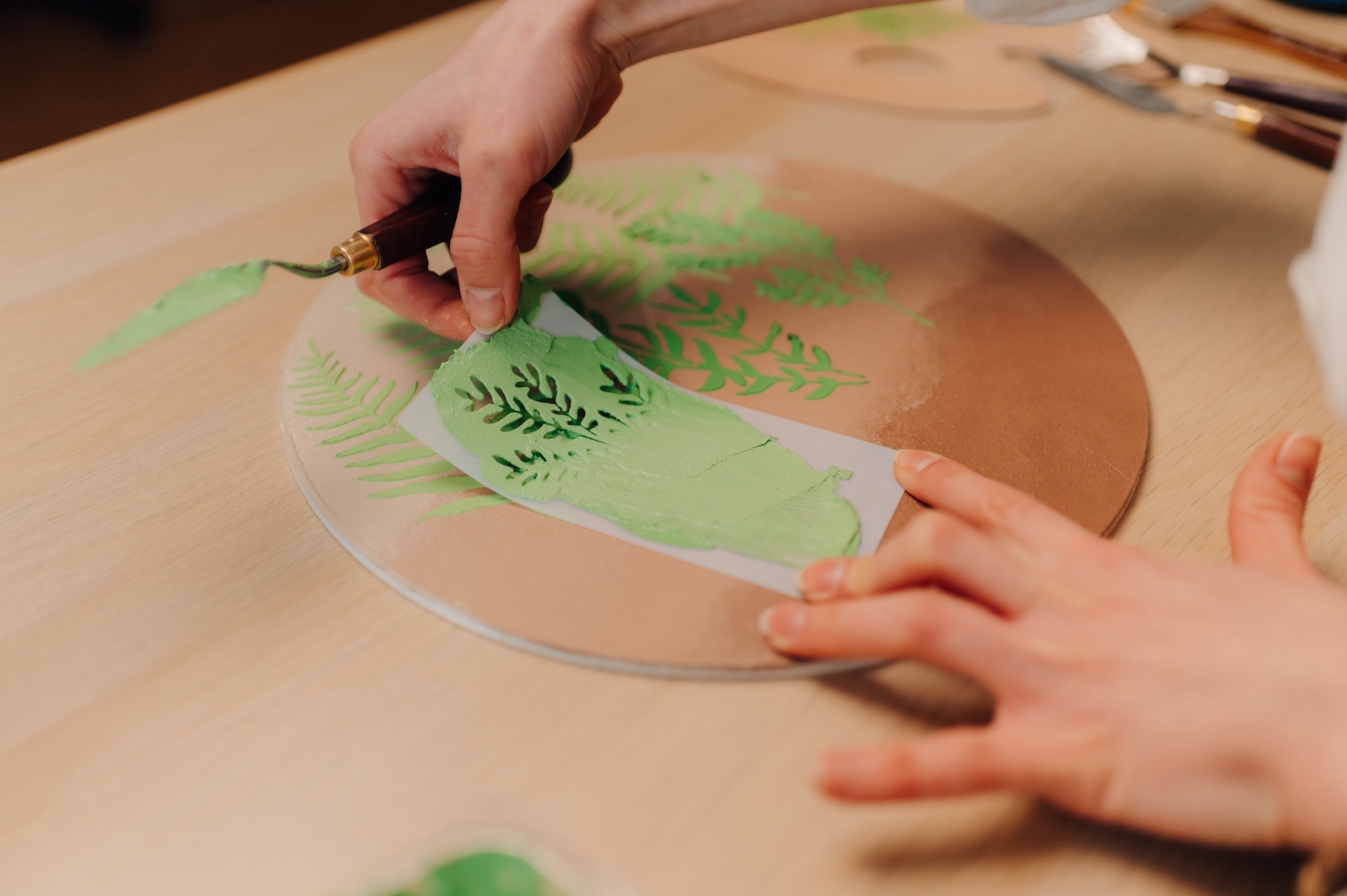Reviewed by Sarah KellyOct 23 2025
Researchers have developed a precise method for controlling where molecules attach to nanoparticles, enabling the design of more complex and customizable nanomaterials for advanced applications.
 The new technology was inspired by stencil painting techniques used by researcher Ahyoung Kim in her pottery classes. Study: Patchy nanoparticles by atomic stenciling. Image credit: Zamrznuti tonovi/ Shutterstock.com
The new technology was inspired by stencil painting techniques used by researcher Ahyoung Kim in her pottery classes. Study: Patchy nanoparticles by atomic stenciling. Image credit: Zamrznuti tonovi/ Shutterstock.com
In her second year of doctoral studies at the University of Illinois Urbana-Champaign, Ahyoung Kim signed up for pottery classes purely for fun - never imagining that the experience would spark a new method for shaping virus-sized nanoparticles used in creating custom materials with unique properties.
When you are immersed in the science, there are parts of your projects that you cannot see. But when you are doing some other activities, that smears in new ideas.
Ahyoung Kim, Doctoral Graduate, Materials Science and Engineering, University of Illinois Urbana-Champaign
Kim often paints intricate designs on her pots after they come out of the kiln. She first applies a wax layer to block certain areas from absorbing paint, allowing her to freely apply color and create detailed patterns with precision.
As a materials scientist, Kim develops methods to guide nanoparticles into precisely designed structures, aiming to engineer material properties from the ground up.
She works in the lab of corresponding author Qian Chen, a professor of materials science and engineering at the University of Illinois and an expert in nanomaterial engineering at the University of Michigan’s Center for Complex Particle Systems.
Kim’s artwork inspired her and her labmate, Chansong Kim, a doctoral student in materials science and engineering at U-I, to selectively paint regions of nanoparticles with molecular patches that extend outward like tiny hairs, altering how the particles assemble.
The precision of this process comes from using iodide as a chemical stencil. Wherever the iodide binds, the hair-like molecules are prevented from attaching.
Since the hair-like molecules naturally repel each other, Kim, Chen, and their collaborators at U-M and Penn State can control their attachment sites to guide nanoparticles into forming larger crystals with more open, spacious structures than previously achievable using other methods.
One of the holy grails of nanoscience has been to make designer building blocks out of any material and then dictate exactly how they stick to each other. This stenciling method is super powerful because it provides a quantum leap in control over the building blocks’ designs, so it means that more sophisticated materials from nanoparticles will become possible in the near future.
Sharon Glotzer, Stuart W. Churchill Collegiate Professor, Chemical Engineering, University of Michigan
The way building blocks are arranged in a material often plays a key role in determining its properties - especially how it interacts with light. For example, nanomaterials can shift color based on structural changes, help microscopes visualize objects smaller than the wavelength of visible light, or even contribute to the development of cloaking devices.
To create materials from nanoparticles, scientists typically suspend the particles in a liquid, where they naturally assemble into a crystal lattice based on the principles of chemistry and physics. While the arrangement can be influenced by adjusting the liquid’s properties or altering the shape of the particles, modifying the surfaces of the nanoparticles opens the door to more complex structures. Glotzer’s earlier research has shown that attaching molecular “patches” to nanoparticles can guide them into arrangements that wouldn’t occur on their own.
Controlling the placement of molecular patches has long been a challenge for nanoscientists. While Kim had previously succeeded in attaching hair-like molecules precisely to the corners of triangular gold nanoparticles, she struggled to achieve the same level of control with other shapes. In reviewing earlier studies, she discovered that iodide, a chemical typically used to shape gold nanoparticles, was acting like a stencil. But using iodide this way required precise control over where it landed.
To solve this, Kim collaborated with Kristen Fichthorn, the Merrell Fenske Professor of Chemical Engineering at Penn State, a U-M doctoral alum in chemical engineering, and co-corresponding author of the study.
Fichthorn developed quantum-mechanical models of Kim’s nanomaterials to predict how surface atoms would interact with various chemicals. Her models indicated that consistent stenciling patterns could be achieved by carefully tuning the ratio of iodide to 2-naphthalenethiol, a molecule that links nanoparticles to the hair-like molecules.
To confirm that the hairs would reliably attach to the linkers, Tommy Waltmann, also a U-M doctoral graduate in physics and scientific computing and co-first author of the study, ran computer simulations. His models showed how the hair-like appendages fit into the linker-coated regions and how the patchy nanoparticles organized into crystal lattices. These simulations offered a practical guide for producing a diverse array of nanoparticles with tailored shapes and surface patch patterns.
That ‘a-ha’ moment where the simulation actually mirrors what we see in the experiments is always very rewarding.
Tommy Waltmann, Doctoral Graduate, University of Michigan
The study was first published in Nature.
Art inspired patchy nanoparticles for creating exotic materials.
Video Credit: University of Michigan
Journal Reference:
Kim, A., et al. (2025). Patchy nanoparticles by atomic stencilling. Nature. doi.org/10.1038/s41586-025-09605-8.